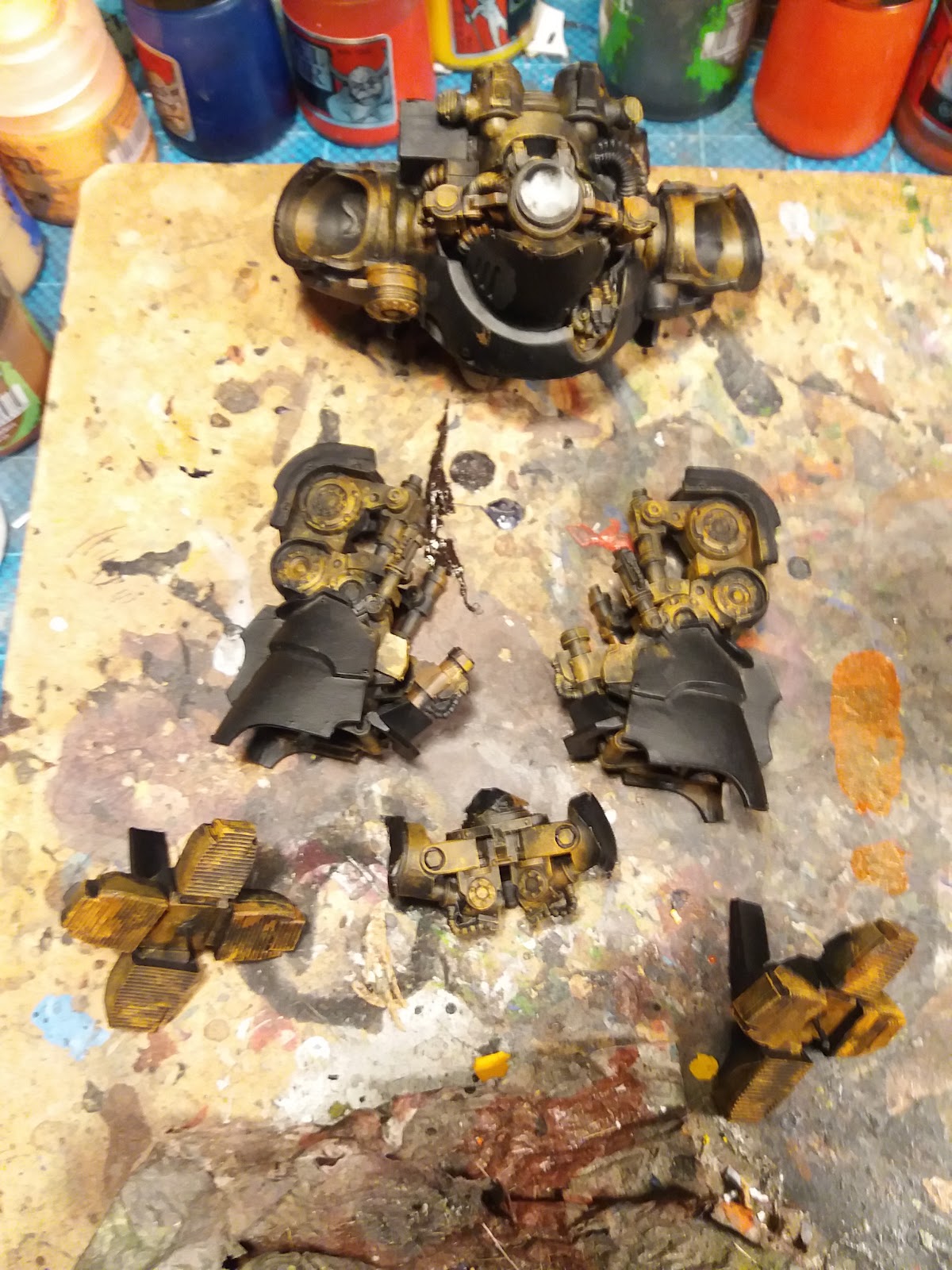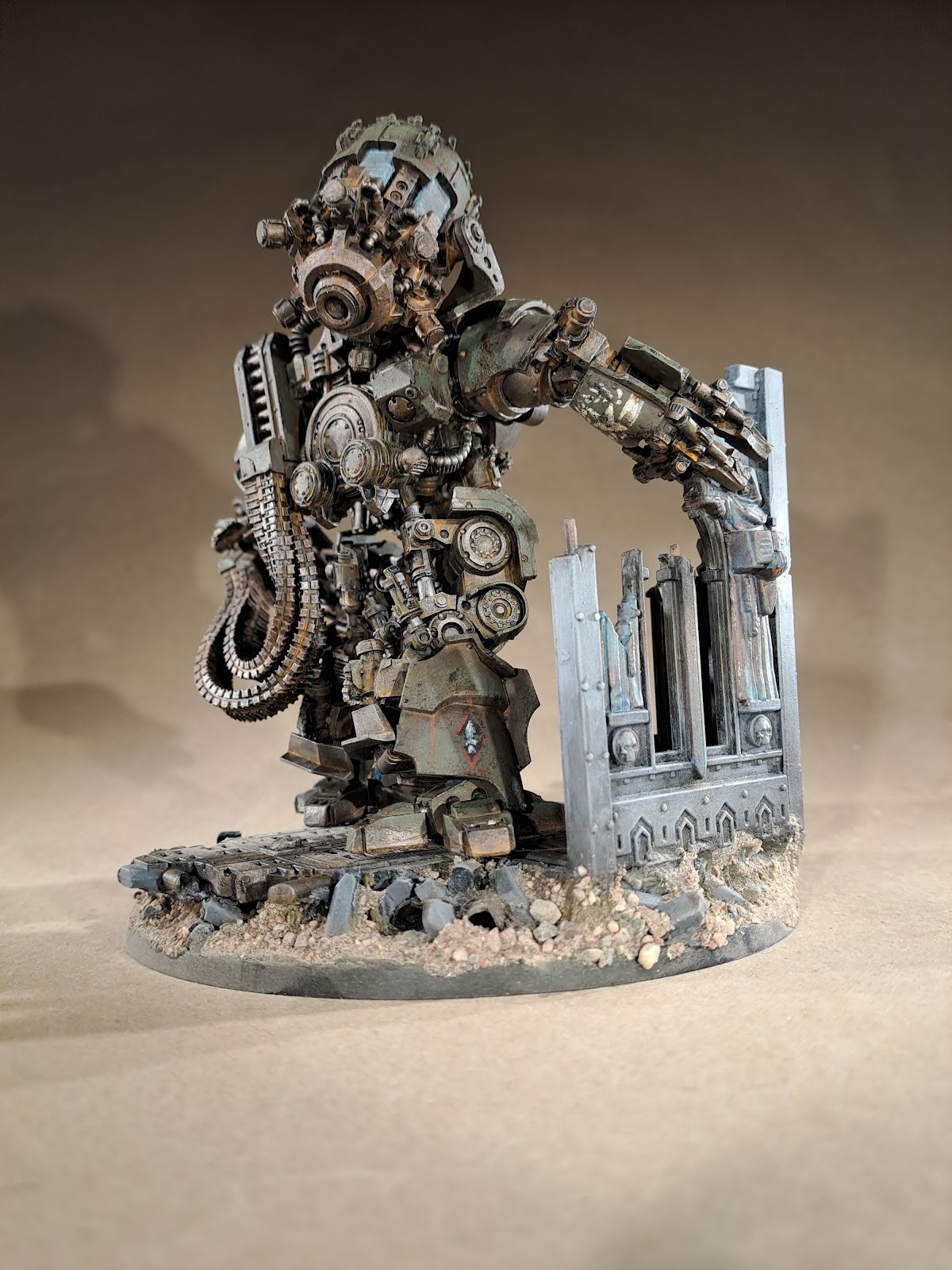After assembling the Thanatar and getting the pose sort of locked in I broke it apart into the subassemblies in which it was to be painted. I also took the opportunity to drill out the barrels of the plasma mortar and the mauler bolters so that the bottoms of the barrels are not as visible. Before spraying the parts I used maskin tejp on the surfaces where I will glue things together, just to make sure that the glue get a good contact with the resin later on.

Once base sprayed black I started the painting process. My previous mechanicum automata has been a solid green with just the pistons picked out in metal, but as this model is so much larger and has so much detail I needed to break it up a bit and use some different colours. For my titans and knights I have recently been doing this by painting the substructure in a pale green/yellow and then adding the dark green armour plates on top (giving them a negative look in low light) which I think go well together with their ghost name. But, since the other automata does not have "ghost" look I thought that I would try something that would not stick out as much compared to the other models.

I have previously played around with heavily rusted metal for my Knight "Entropy" and for my fledgling Necron force. This gives them a brown/golden look and I think this could tie in nicely with the "dark green" as it has a very strong brown tone. So I decided to try making a rusted subframe with my usual green armour.

The way I paint the rusted metal is quite fast, the first step only took about an hour. This consists of base painting the parts black (over the spray as it does not take drybrushing well), den adding patches of brown and two tones of orange to the model. This is just slapped on and is very quick. Once dry I drybrush the model with cupper and three tones of white metal. This gives the model a rusted look and could probably be used for rank and file to some medium table top standard. But I could not leave it at that so I washed everting black and then I went in with a detailed brush and some watered down browns and oranges, applying this more carefully to the model in areas where rust would appear. The watered down colours will work as washes and go into recesses and into coroners etc without having to actually paint in all the details. Adding the second layer also give more depth the colours as well as a better blend and smoothness to the layers. Then it was a repeat of the drybrush. Sadly the photo of this stage is not very good as the now much brighter metals (two passes of drybrushing) cause some sort of problem with the camera ship and how it records the other colours.

Once the subframe was done it was on to the panels, and now I remembered how painful it is to paint Forgeworld models compared to the modern plastics. As the torso, legs etc are cast as singel pieces, I can not paint the armour separately as I normally do for my knights (or any other smaller parts which makes it very fiddley to get to all the parts and places). So I hope that I do not spill over onto the already painted parts with the green. After base painting the armour panels green they where washed with brown ink and drybrushed with three tones of green. After the drybrushing the parts are rinsed under a water tap at full pressure to wash away any lose paint dust. This prevents icing in my experience, which is a serious problem considering the many layers of drybrushing I use.

Once dry I will ink everything again and do another run of green drybrushing but that will be another day. Hopefully I will manage that tomorrow so that I will have the main body and legs done for the Friday summary of the first week. Second week will be painting chevrons etc onto the armour and chipping. I will also probably start the base work on the arms and weapons which will pretty much be the same as for the body, i.e. a rusted under structure and green armour. At some point I will also need to start the base, but that will probably be more toward the end of the month...






















































